Dongle Wars: Questyle M15, iFi GoBar, Cayin RU6, and More!
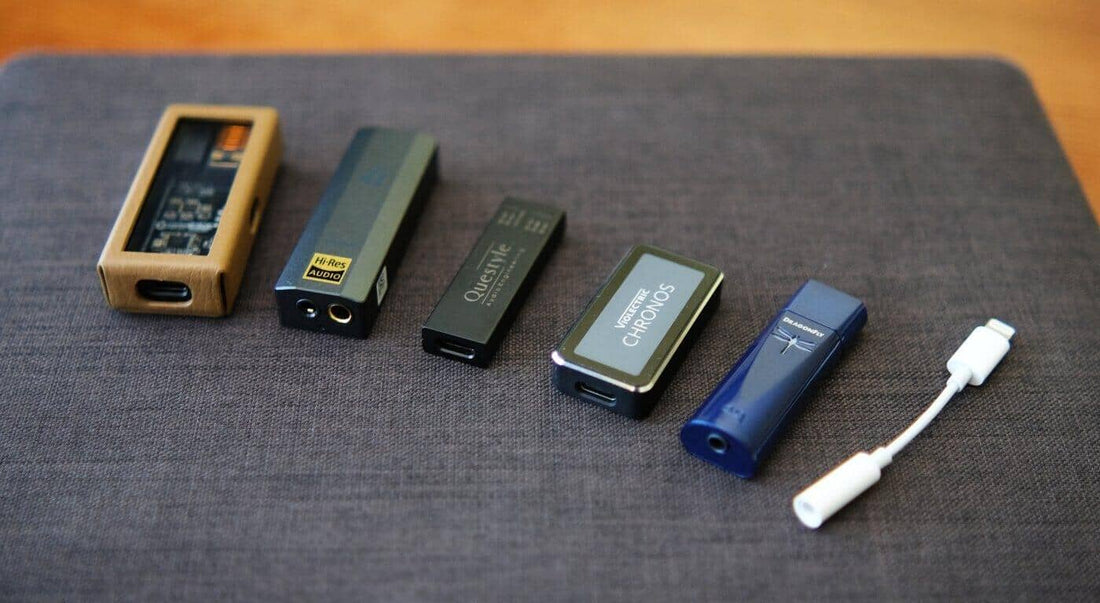
Dongle Wars: Questyle M15, iFi GoBar, Cayin RU6, and More!
Written by Precogvision
Introduction
Insert background here about how Apple killed the beloved integrated 3.5mm jack and how dongles are the new hot commodity. While most listeners no doubt rued the removal of the integrated headphone jack, audiophiles mostly embraced it because its removal afforded another parameter for which to fine-tune their portable setups. Indeed, the audiophile market has seen a surge in the variety of dongles with - as most things niche in audio - prices quickly rising and hitting figures far outside what normal consumers might be used to seeing.
Contrary to some of my audiophile brethren, I've never been too enthusiastic about dongles. Apple's own dongle mostly equated to "it's good enough, case closed" for my purposes. But then in Singapore, I had the opportunity to demo a couple of the aforementioned higher-end, more expensive dongles, and this was followed by Headphones.com sending me some more to review in a round-up. The stage set, let's take a look at how I found these dongles to stack up and which - if any of them - have managed to shift my jaded paradigm.
Units were loaned for review courtesy of Headphones.com, and they will be returned at the end of the review period. Cayin RU6 was loaned courtesy of @antdroid (Audio Discourse). As always, what follows are my honest thoughts and opinions to the best of my ability.
Brief Hardware Impressions
AudioQuest Dragonfly Cobalt ($330)
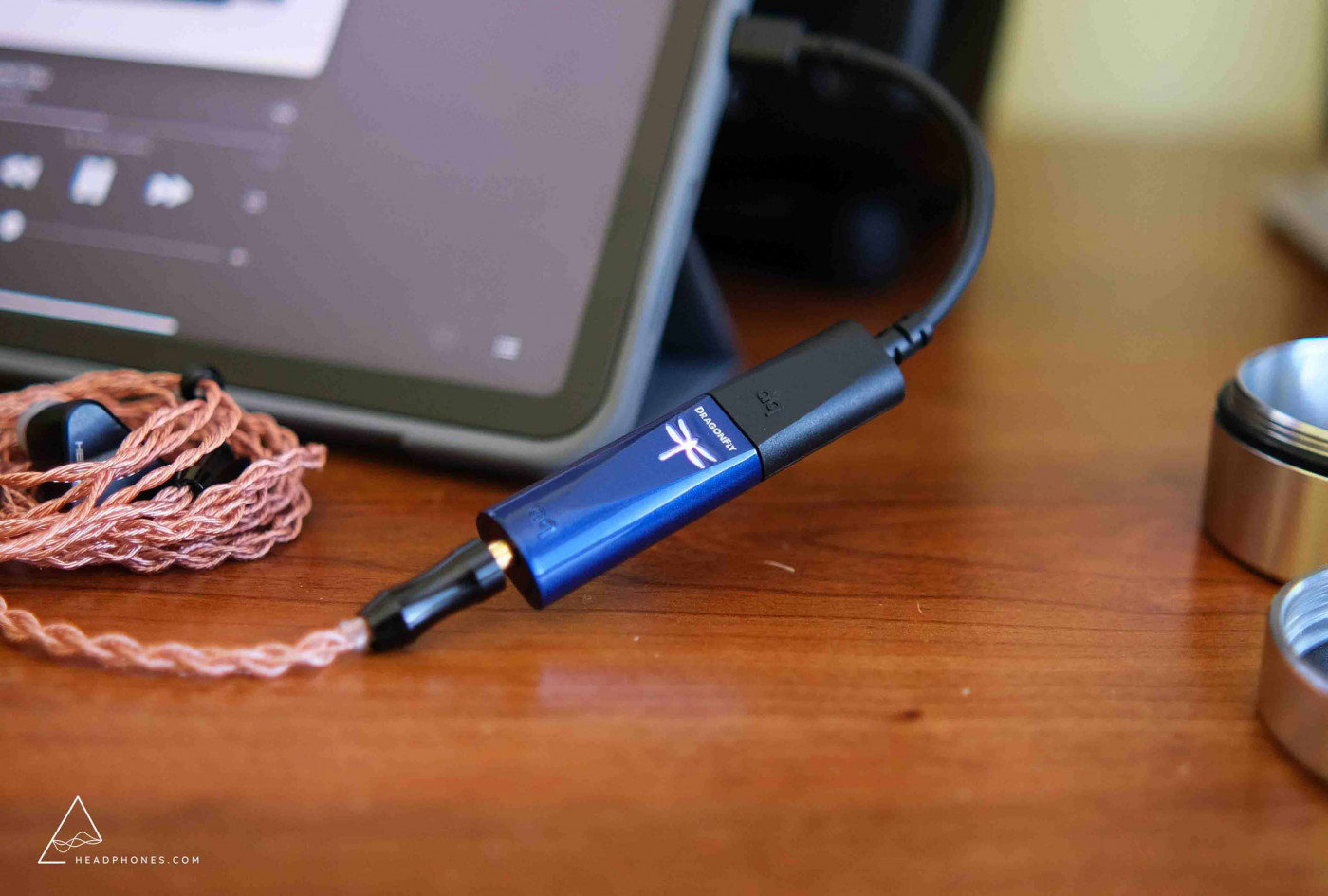
The Dragonfly's design is clearly quite old, as a lot of the design language is dated. That doesn't necessarily mean that it's a bad design, though. In fact, it's very compact due to its USB stick design, and there's a certain heft behind the solid aluminum construction that inspires confidence. Some limitations crop up from here in the form of only a single 3.5mm output, lack of integrated volume controls (it's all plug and play with this dongle), and the inclusion of a single USB-C to USB female adapter. Not exactly $300 material in my opinion, but hey, at least you get a nifty leather sheath.
Cayin RU6 ($250)
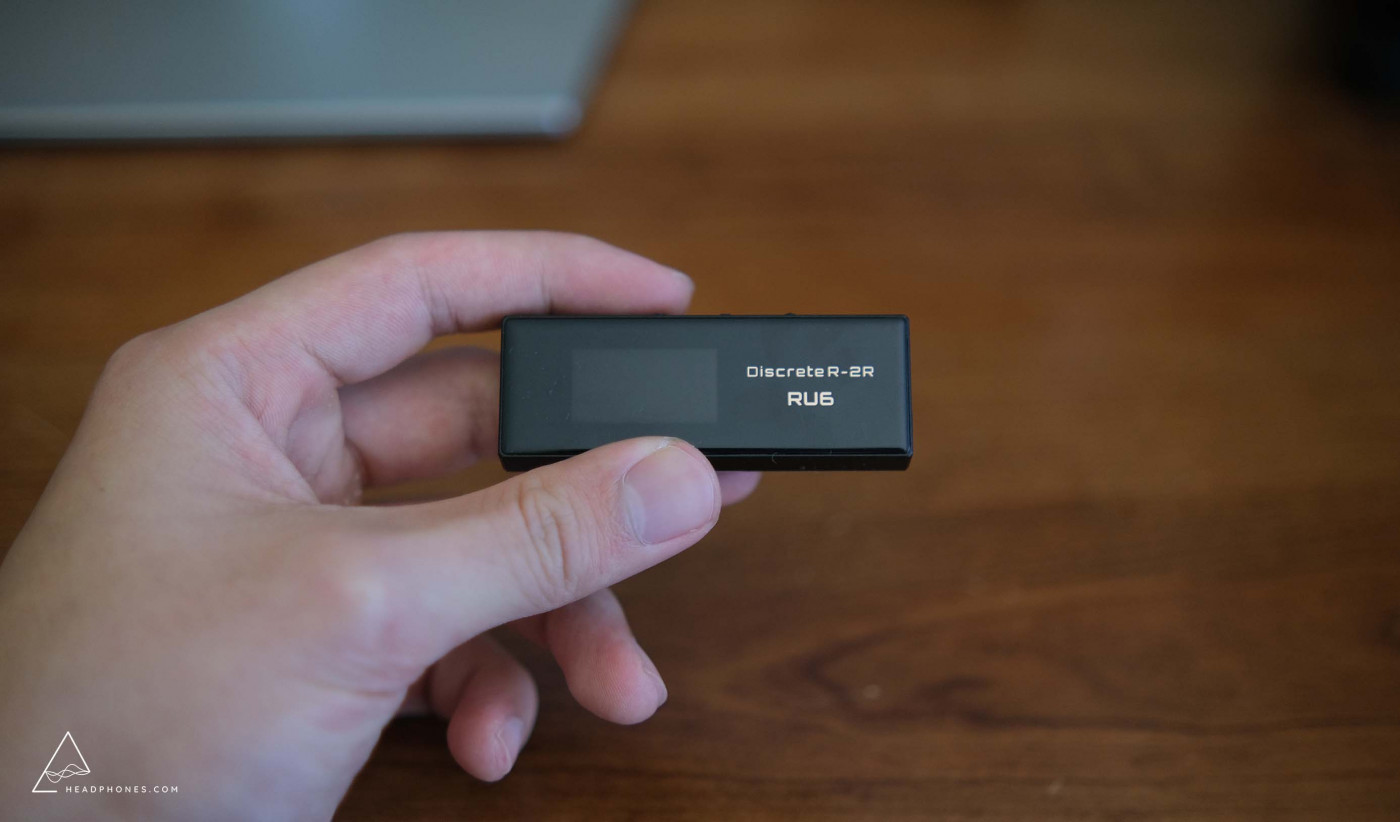
This unit was sent to me on loan, so I'm not sure if I received the entire accessory package. The RU6 itself is medium-sized and of decent build quality (there is some play to the buttons on the side, and the chassis feels somewhat thin for aluminum). The RU6 distinguishes itself from the other dongles in this pack with a small OLED screen where you can select the gain (high or low) and the mode (NOS or OS). The RU6 has two ports, one for 3.5mm and another for 4.4mm.
iFi Audio GO Bar ($330)
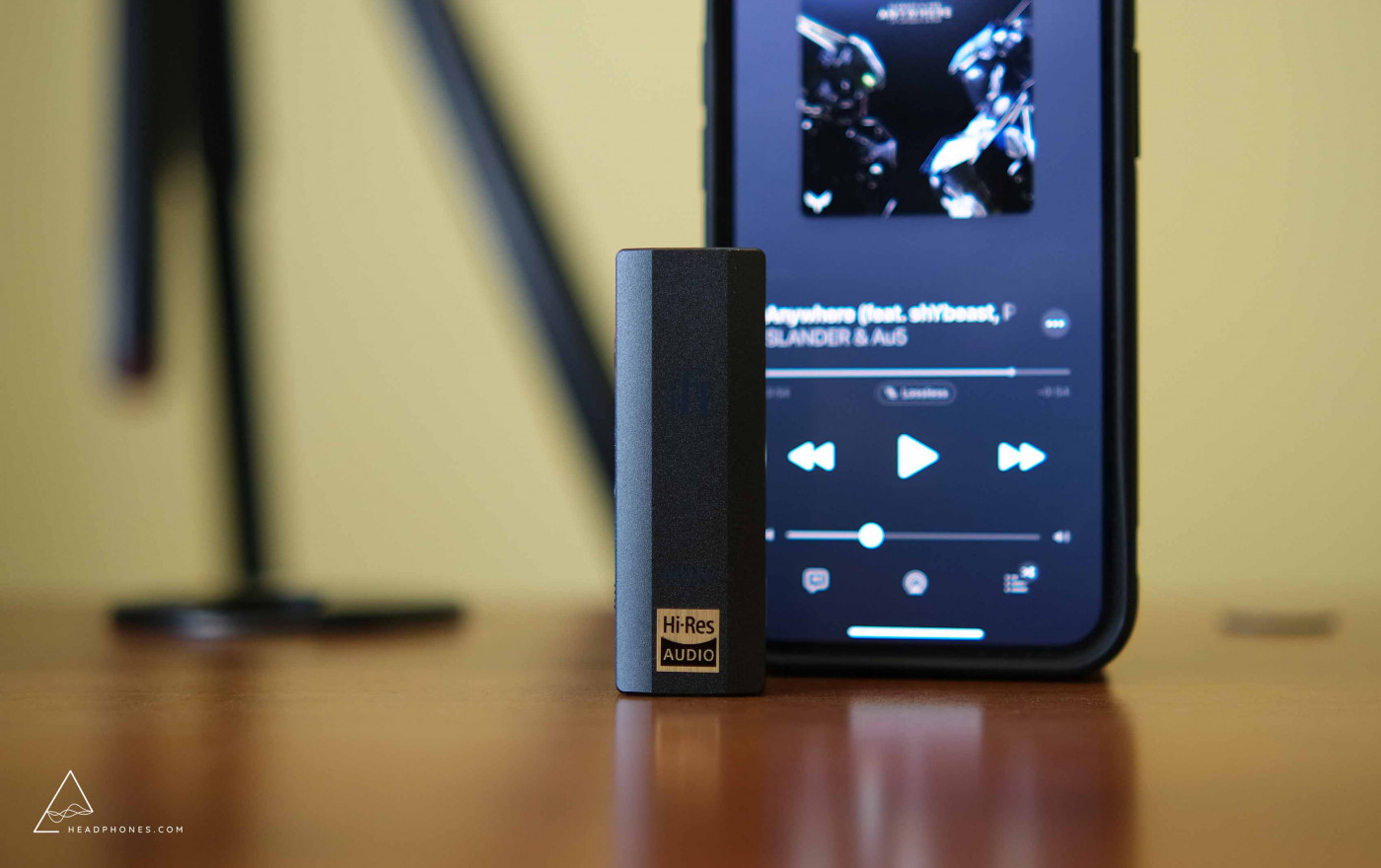
If the Dragonfly Cobalt takes me back to another time, the GoBar brings me back to the present. It's slightly larger than the Cobalt, but it's packing a myriad advances on the tech front. First, the inclusion of 3.5/4.4mm outputs and distinct volume controls. Second, iFi's IEMatch technology which will tame the hissing from even your most sensitive IEMs. And finally, iFi's integrated Xbass and XSpace filters which allow you to boost the sub-bass, expand the soundstage, or both, at the touch of a button. The accessories that come with the GoBar are also more reminiscent of the price it commands: a USB-C to Lightning cable, USB-C to USB-C cable, and a leather pouch that facilitates storage of both the GoBar and one of the included cables. Honestly, the only criticism that I have about the GoBar, aside from the slightly larger size, is the god-awful color chosen for the LED labels on the back. The labels are almost impossible to read unless you catch them from just the right angle.
Questyle M12 ($140)
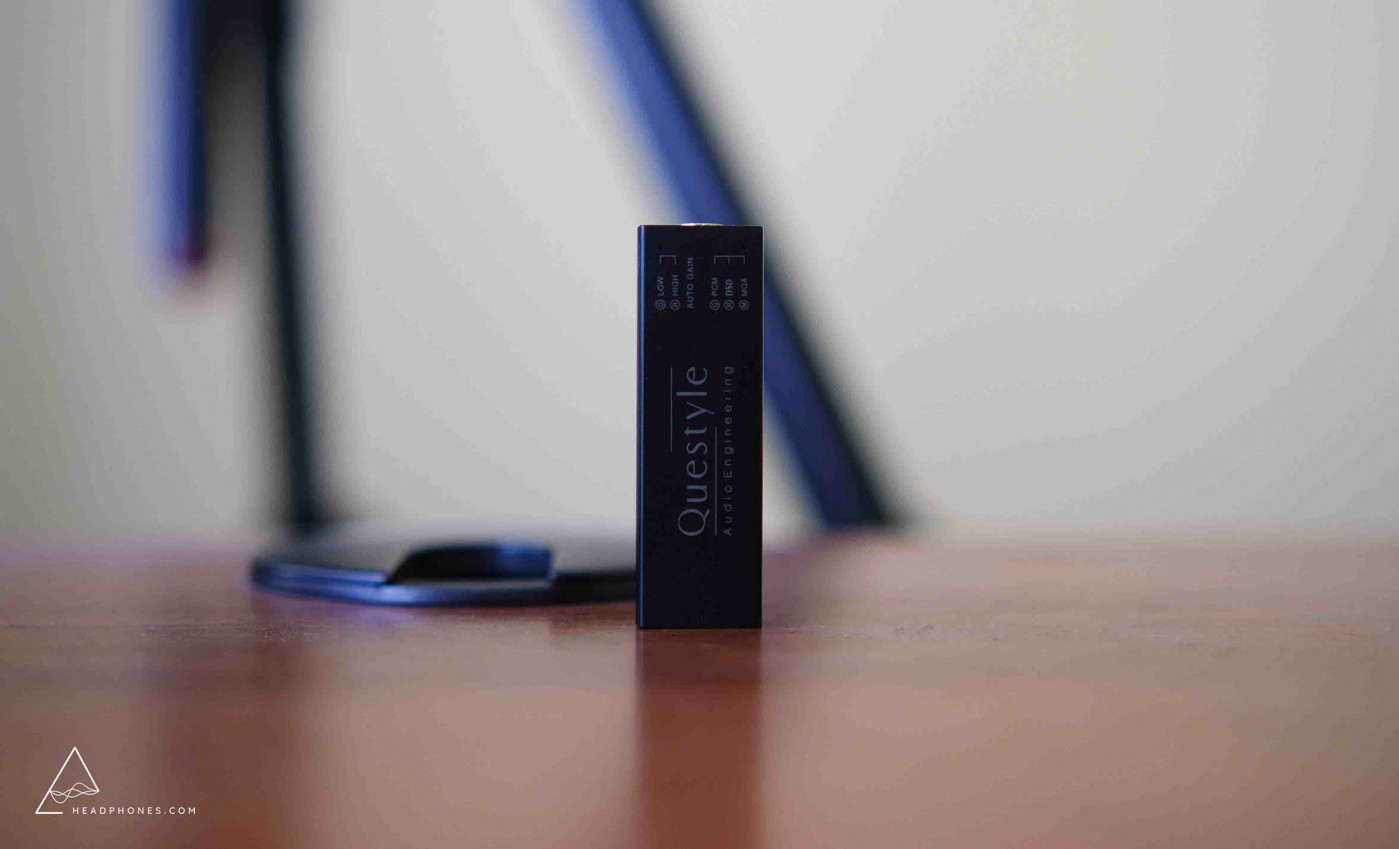
In the box with the M12, you'll find the dongle, a USB-C to USB-C cable, and a USB-C to USB-A cable. The M12 has a rectangular aluminum chassis. There are two LEDs on the back whose color denote the gain active (it's done automatically) and the audio format being played. It's pretty much as simple as it gets not unlike the Dragonfly Cobalt. As the cheapest dongle in this shootout at $140, perhaps some would be willing to give the M12 a break for its lackluster features and accessories.
Questyle M15 ($250)
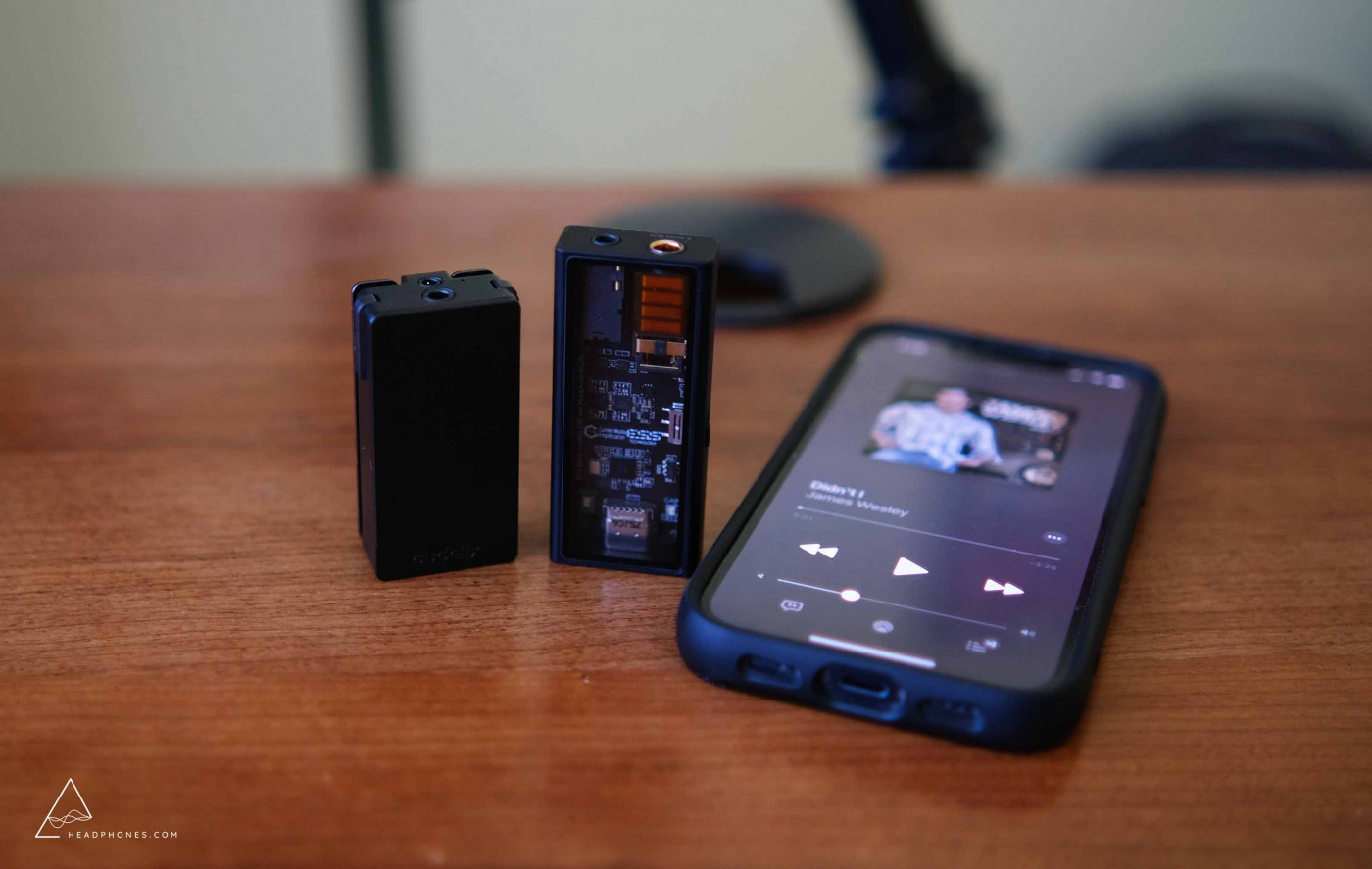
Not much has changed from the M12 on the presentation and accessories front here. However, the design of the M15 itself has changed dramatically. It's the largest dongle that I've handled - even more so with its case - to the point of which it's somewhat unwieldy in practice. Perhaps it can be forgiven for its solid aluminum construction and addition of a visually appealing glass pane which affords a look at the internal components alongside two indicator LEDs. The M15 also has two ports, one for 3.5mm and one for 4.4mm. As opposed to the M12 which made use of an automatic gain, the M15's is a manual one on the side that affords you both low and high gains. While it does not have an integrated volume control, I found the low-gain's volume to almost exactly match the Lightning dongle's volume, and the M15's volume adjusted linearly to the added granularity in the iPhone's drop-down, touch menu for volume.
Violectric Chronos ($250)
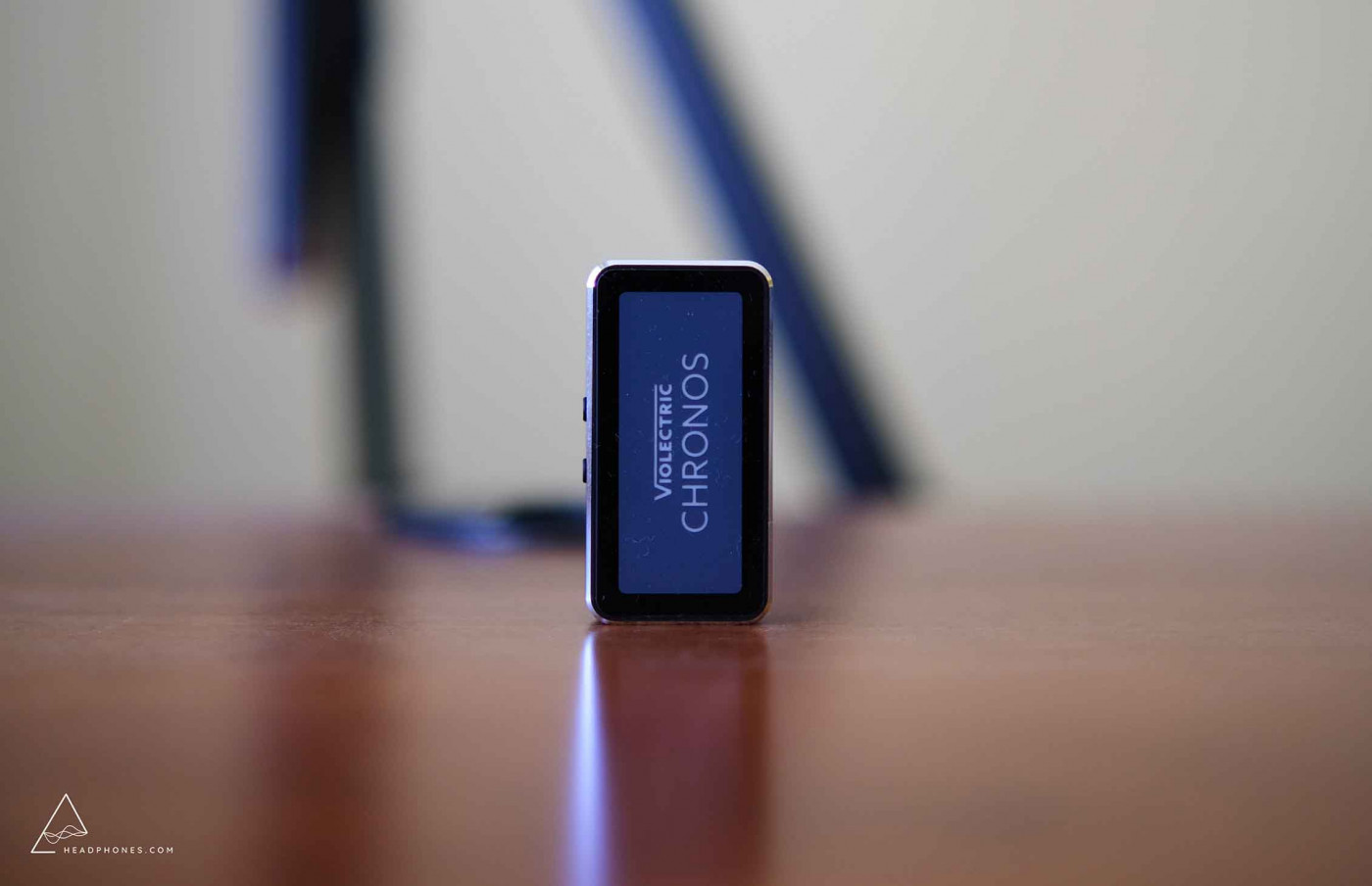
Violectric has kindly included adapters for USB-C, Lightning, and micro-USB which I thought was a welcome touch (given that most of these dongles only include two, or even one of the three cables). The Chronos has what again feels like an aluminum chassis, but with polishing on the bezel to beget a sleeker aesthetic. It has two small, circular volume buttons on the side. I found the Violectric Chronos to have noticeably less juice to give than the other dongles in this shootout. Of course, when we're talking about IEMs - especially given the Chronos' single 3.5mm output - this is never an issue, and I had no problem getting adequate volume out of any IEMs I tried with it.
Love our in-depth reviews?
We test and review hundreds of headphones every year. Sign up to get the latest news, reviews, guides, and more in your inbox. Join the 60,000+ like-minded audio lovers who love our newsletter!
Sound Impressions
There are many listeners who claim to hear significant differences between sources. However, it's easy to exaggerate differences when performing source comparisons to better illustrate nuances to others, and I've noticed it's even more common to trick ourselves into thinking we've heard a major difference in the heat of the moment. For me, I will say that differences between sources tend to be quite minor (and require a good deal of concentration to discern), despite the detail that I might go into to depict nuances. The bottom line is that I don't think it hurts to be a skeptic when it comes to differences between sources, and if you're someone who doesn't hear differences altogether, there's nothing wrong with that.
I also do not support MQA. Please see this video if you'd like an in-depth explanation as to why. The short version: it's a lossy codec and - irrespective of how MQA subjectively sounds - MQA's claims are false advertising. While some might see the addition of MQA capability as harmless in the sense that it's the icing on the cake, or that one does not necessarily need to use it if they do not support MQA, I mostly have to perceive it as a con regardless. It's money spent on added hardware; put alternatively, money that could have been saved to set a lower MSRP.
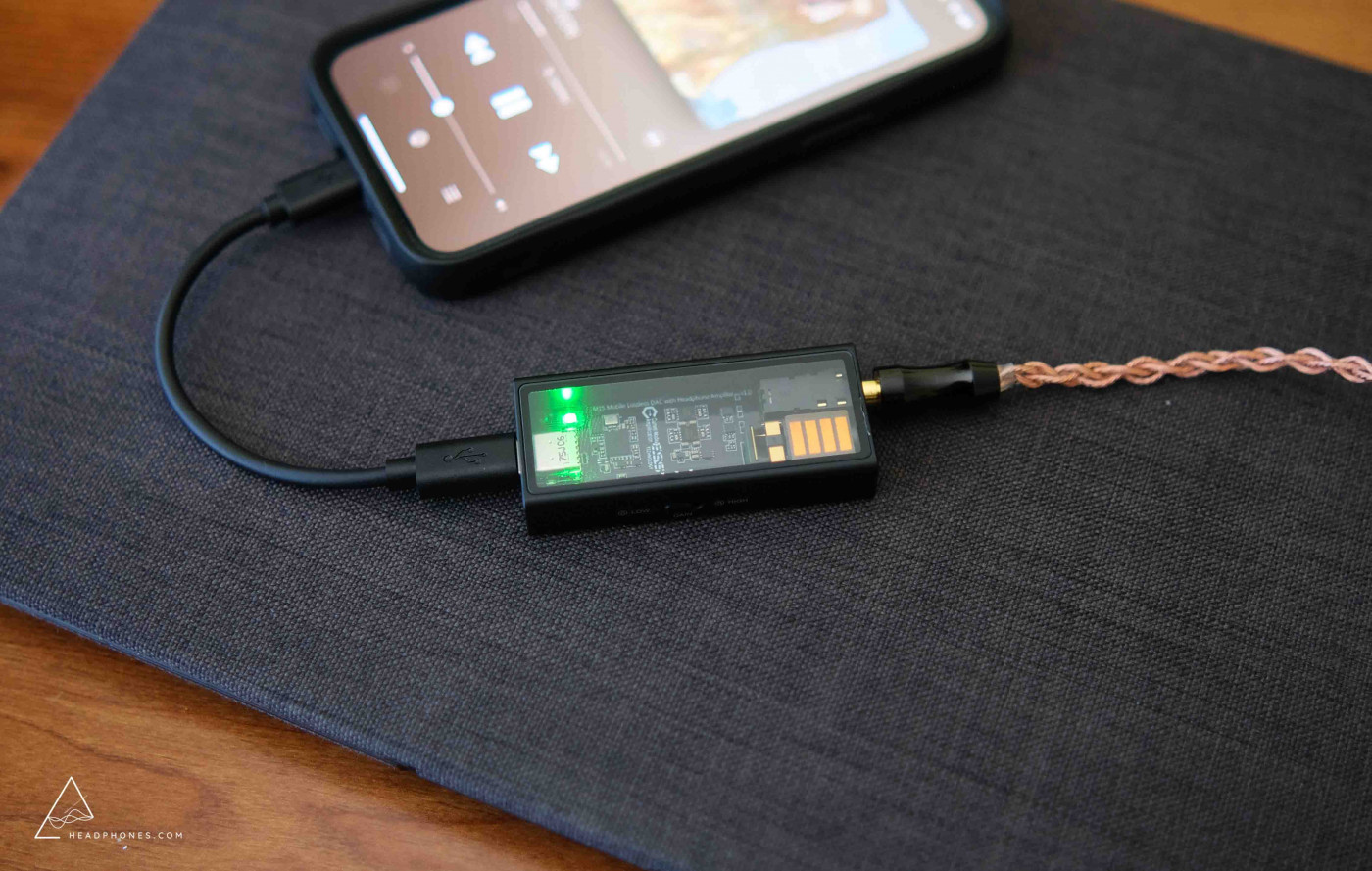
Disclaimers aside, let me briefly introduce my listening methodology:
- All of my critical listening is done off of IEMs with flat impedance curves (specifically the 64A U12t and Symphonium Helios) to remove the output impedance variable.
- I volume match as closely as possible using a sinewave file and my IEC-711 coupler as an SPL meter through REW.
- Listening is done at ~70dB off of my iPhone 13 Mini using lossless files. In the case of the Dragonfly Cobalt, I used my iPad Air 4 with lossless files.
- I have not read any impressions on these dongles previously, as (I alluded to this earlier) they're not really in my usual wheelhouse.
My benchmark when it comes to dongles is also unequivocally the humble Apple dongle. At $10, it is easily the best value of any dongle on the market, even more so compared to the dongles in this shootout which are pushing well into the three figure range. To the point of it being my benchmark, context is critical when making source comparisons; therefore, I'll describe how I perceive the Apple dongle's signature:
Generally, I hear the Apple dongle's key strength as lying in its inoffensive tonality. It has a mid-centric presentation with vocals at the forefront and sporting good size on the stage. Similarly, bass sounds noticeably inflated in the mid-bass and lacking texture. Treble generally lies behind the bass and midrange frequencies, coming off slightly plasticky and lacking shimmer, especially past 15kHz. Detailing on the Apple dongle is mostly surface-level; it's a bit too smoothed over for its own good to my ears. For further context as a baseline, I will assign a subjective value to its overall sound quality: 3/5.
Dragonfly Cobalt: Compared to the Apple USB-C dongle using my iPad Air 4 and lossless files. Bass is slightly less mid-bass emphasized and sounds more dry while maintaining adequate slam. The midrange of the Cobalt sounds more neutral. Treble transients on the Cobalt sound thinner and crisper in attack than the Apple dongle, especially around 5-6kHz; this distinction begins abating when entering the mid-treble regions. By the final octaves of air, the Cobalt also sounds like it's lacking shimmer, leading to a slight dryness of treble compared to the Apple dongle's more "plasticky" treble tactility. The Cobalt generally sounds crisper in attack and like notes decay more quickly, thus diminishing the note blurriness that I've usually associated with the Apple dongle. Not bad, but also not good for $300. 3.5/5.
Cayin RU6: The RU6 has two distinct modes: OS and NOS. The OS mode of the RU6 is generally mediocre to my ears. It sounds etched and sharp in the treble, and the midrange is likewise quite lean. That's not to mention decay transients on this mode which are truncated to the point of which they amount to little texture. Moving along, the real selling point of the RU6 is intended to be its NOS mode which takes advantage of the device's R-2R configuration. On this setting, I found the RU6 to be quite warm, mostly thanks to what sounds like a pronounced roll-off after 15kHz. Bass is perhaps a tad boosted, the midrange favors the lower-midrange, and treble is wholly smooth. On one hand, I can see why this type of sound might appeal to some listeners. It's fatigue-free, the timbre is pleasant, and it's quite "musical". On the other hand, it's impossible to ignore that this warmth negatively impacts the RU6's ability to resolve detail. Transients are generally soupy and, realistically, I find the Apple USB-C dongle to surpass the RU6 for clarity in A/B. Transients on the RU6 decay slowly enough to pull off some sense of texture, but it's difficult to knock the feeling that they're a little too pulled out and entering blurred territory. The RU6's sense of dynamic contrast, slam, and imaging are all fairly average to me as well.
At the end of the day, I'm not exactly sure what to make of the RU6. The OS mode is vanilla in a bad way, and while the NOS mode does have some novel, it's also not without its share of drawbacks. If one is partial to the synergy game, then I suppose the RU6 could have some utility for taming brighter or more aggressive sets. 3.5/5.
iFi Audio GO Bar: Volume matching is difficult with the GO Bar, as the volume resets each time on iPhone before hitting the +/- buttons. That caveat aside, the GO Bar generally has a warmer, more intimate presentation. Bass is boosted, but with more emphasis on the sub-bass compared to the Apple dongle; consequently, bass has a satisfying sense of bounce. The midrange is pushed forward, positionally, to a stronger degree than the Apple dongle. Both the lower-midrange and upper-midrange skew toward the thicker side in terms of body, yet are seemingly well-detailed. Treble sounds crisper than the Apple dongle in the lower-treble regions, perhaps somewhat unnaturally emphasized for a more exciting sound. Not the greatest shimmer up-top, but adequate presence and sounds fairly fluid for gradations in treble volume. Generally good sense of technical performance. Layering is not the best, but the GO Bar's resolution is solid and it sounds surprisingly lively, desirably colored, compared to how flat most of the dongles in this shootout come across. Pretty decent overall even if the price of buy-in is quite steep. 4/5.
Measured using the Symphonium Helios:
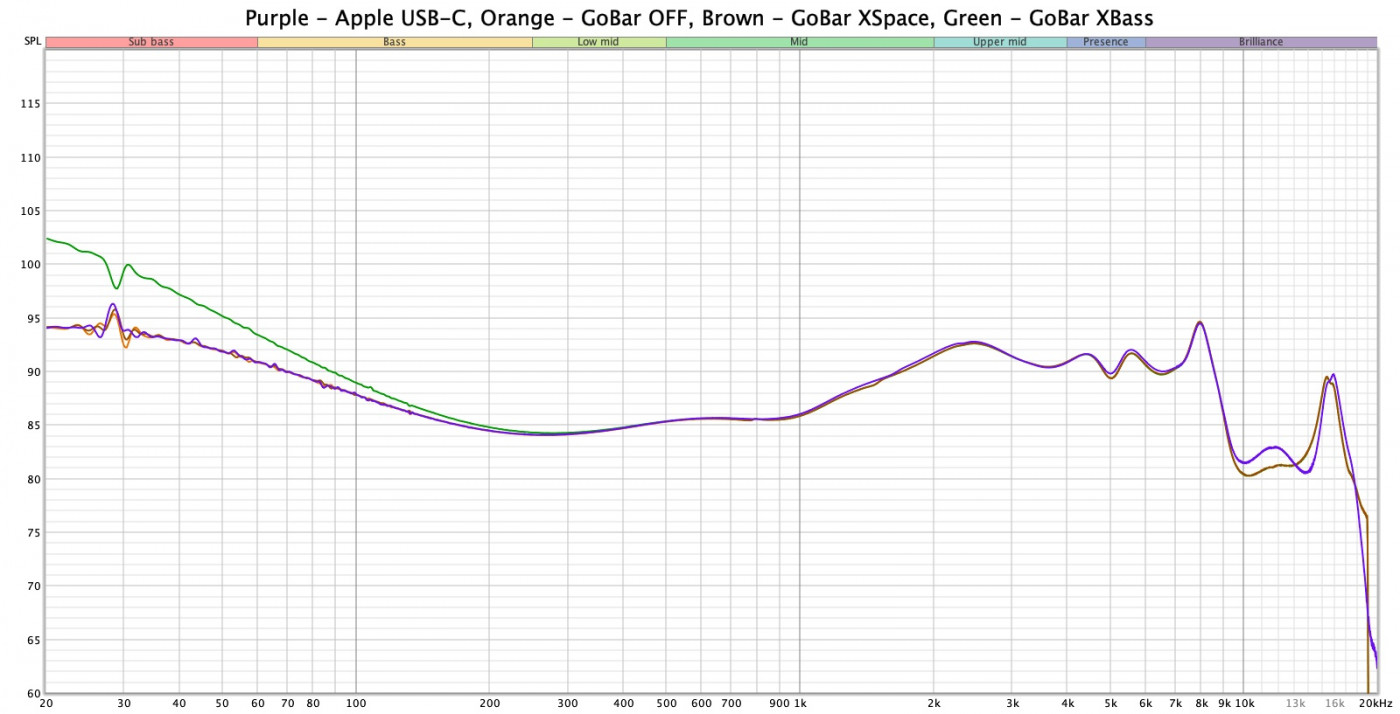
The GoBar also affords one the option of using iFi's XBass and XSpace features. Xbass is essentially a powerful sub-bass boost. The effects of XSpace are more difficult to quantify, as it doesn't seem to make a difference to frequency response (although it feels like the upper-midrange frequencies become more recessed, thus opening up the stage more). I believe this mode primarily makes use of cross-feed to create a more 3D-like experience.
Questyle M12: I can't say I was too impressed with this one. Generally, the M12 comes across on the leaner side to me. The body of vocals are somewhat anemic, and the M12 is more recessed in the upper-midrange than the Apple dongle. Center imaging sounds uncannily pulled back on the head-stage. Treble on the M12 sounds like it's missing a solid chunk of the mid-treble, yet it has a slightly odd crispness to it nonetheless. Bass on the M12 is less bold, less mid-bass oriented, and tighter than the Apple dongle while seeming to lack a sense of slam to me. Both the bass and general presentation almost sound dampened, no doubt thanks in part to the perceived recessions in the midrange and treble. The general benefit of the M12's "smaller" note presentation is that its sense of resolution and layering are a step ahead of the Apple dongle. But not by much, and I'd be remiss to mention that it neither sounds as exciting nor as pleasing overall to me. Perhaps this would work better with warming sounding IEMs. 2.5/5.
Questyle M15: This is one of the few portable sources that makes a noticeable difference in a good way to me. The M15's presentation is no doubt colored, but hitting the sweet spot of sounding mostly authentic in terms of its timbre. Bass on the M15 is a hair boosted, and the midrange is more or less neutral with exemplary texturing; enough texturing to make even a higher-end DAP, like my iBasso DX300, come across as smoothed in decay. Now, I wrote "mostly authentic" because a possible point of contention that becomes apparent with closer listening is the M15's treble response. It seems to have a slightly excessive bump from around 10-15kHz. Cymbals have a splashy characteristic to the way they crash and decay, albeit with a good sense of weight behind their transients (thus circumventing the "crushed" quality to dynamic range or "etch" to timbre that plagues lesser sources). The M15's brightness in these regions is more or less an "I can live with it" ordeal, as I often associate presence in these regions with an increased sense of dynamics - which, make no mistake, the M15 has in spades. Indeed, the M15 has commendable dynamics and detailing. I hear some minor bass blurriness and upper-treble splash, but the midrange really shines true for a sense of fidelity. Staging on the M15 is probably its weakest point (mostly just slightly above average compared to the Apple dongle), but this is one of the best sounding dongles that I've heard yet. 4.5/5.
Vioelectric Chronos: Slightly inflated quality to the bass, although not quite to the degree of the Apple dongle. Perhaps slightly better in terms of quality. Midrange is more neutral than the Apple dongle. Generally has a more lively treble response than the Apple dongle. Seems to have more mid-treble and shimmer up-top, not coming across as compressed or plasticky for gradations in treble volume. Technicalities don't seem much better than the Apple dongle, as the Chronos sports similar blunting to midrange attack, and decay doesn't sound much more textured (if at all). The Chronos' midrange transients honestly sound kind of soupy. In any case, I'm splitting hairs here for technical qualities, which more or less says where the Chrono sits to my ears. 3/5.
The Bottom Line
So which of these dongles are worth it? Well, to be frank, I don't think any of the high-end dongles I've tried are "worth it". The differences I've noted in this shootout are minor enough that I'd be happy to just recommend the humble Apple dongle to the majority of listeners. Some of these dongles are also not ideal from a portable standpoint, as they're physically unwieldy. But if you're someone still keen on taking the plunge for that last leg of performance, then there are two dongles that stand out to me in this pack. For raw sound quality: the Questyle M15. The M15 delivers as one of the most impressive devices within its niche that I've heard; in fact, it handily outperforms a lot of lower-tier DAPs for sound quality (and I've stacked it against my much more expensive DX300 repeatedly as testament to the M15's performance). My other pick is iFi's GO Bar for its litany of features. The XBass and XSpace are a boon to listeners looking to add some flavor to their sound, IEMatch is always a handy feature for more sensitive IEMs, and it doesn't hurt that the GO Bar's sound quality is quite solid. In any case, feel free to check back on this article in the future, as I'll likely be updating it with further impressions on other dongles I've heard.
- Precovision
